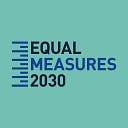Participation in the SDGs: what role can young women in Asia-Pacific play?
Our partner ARROW launched a Youth Survey Report and we caught up with their Executive Director, Sivananthi Thanenthiran, for a Q&A to unpack the findings.
The largest number of young people globally live in the Asia-Pacific region. Through this survey, what did you learn about the challenges they face, particularly young women, and how to ensure their participation in the Sustainable Development Goals implementation processes in the Asia Pacific Region?
The COVID-19 pandemic has really put the brakes on the vibrant participation of NGOs in the national, regional and global policy-making spaces. Yet decisions are made every day, policies are crafted, programmes for subsidies and funding (record amounts if I may say so) are being designed — all of this bypassing the participatory decision-making processes that civil society has tried to advocate for and integrate for the past three decades. More needs to be done to ensure governments reinstate participatory, democratic processes during these times, and to ensure accountability from governments for what they are doing.
If we look at mortality numbers we can assume that young people are least affected by COVID-19. The converse is true. They are the most badly hit. Their education has been halted. Services that they may procure from an educational facility — meals, menstrual hygiene products, sexual and reproductive health information and services — have also disappeared. Young people in higher institutions of learning, who may have incurred debt in order to pursue these studies are also left in limbo and they may have to add an additional year of expenses as they wait to graduation. The coronavirus recession also threatens job opportunities for young people, as economies in the region project to contract.
In this girls and young women will become de-prioritised by families and communities, as Asia is a region where the gender power imbalance is great. In times of scarce resources, families will choose to educate boys, and ensure girls carry out household tasks. As families are pushed into poverty — we can expect child and early and forced marriages to rise. The care work burden falls greatly on the shoulders of women and girls.
According to the survey results, 69.6% of the respondents consider gender equality and empowerment as the second most representative area of their work. Is the future looking promising for the achievement of Gender Equality by 2030 in the Asia-Pacific region?
The Asia-Pacific region has always held firm to the axiom of development before rights. The pandemic has revealed the gender fault lines explicitly to a greater audience across different countries. But positively advocates can look at how we are and can utilise this moment to ensure advocacy for and compliance with global women’s rights standards.
On May 27th, you discussed “Safe abortion in the midst of a pandemic” at a webinar. How COVID-19 has affected girls and women’s access to reproductive health services in the Asia-Pacific region?
Across different countries we saw health system resources deployed to fight the effects of one virus leaving many services in the lurch. Health administrators and policy-makers also had powers to be able to determine what constituted ‘essential’ and ‘non-essential’ services. In this access to contraception, Comprehensive Sex Education (CSE) and access to safe abortion were all deemed non-essential.
Women and girls’ access to sexual and reproductive health and rights (SRHR) services affected by:
- health system limitations
- closure of premises providing non-essential services (essential = food, water, electricity); and closure of NGO centres offering contraception, abortion, antenatal services, STI services but not clinics and hospitals (i.e subsidised services reduced, but not private services)
- border/ movement controls set in place by government — which limits women and young people to the confines of the home
The pandemic is hitting hardest women, adolescents, marginalised groups (indigenous people, migrants, refugees, persons with disabilities, LGBT)
Learn more about our partner ARROW and the work they are doing to support girls and women in the Asia-Pacific region.
